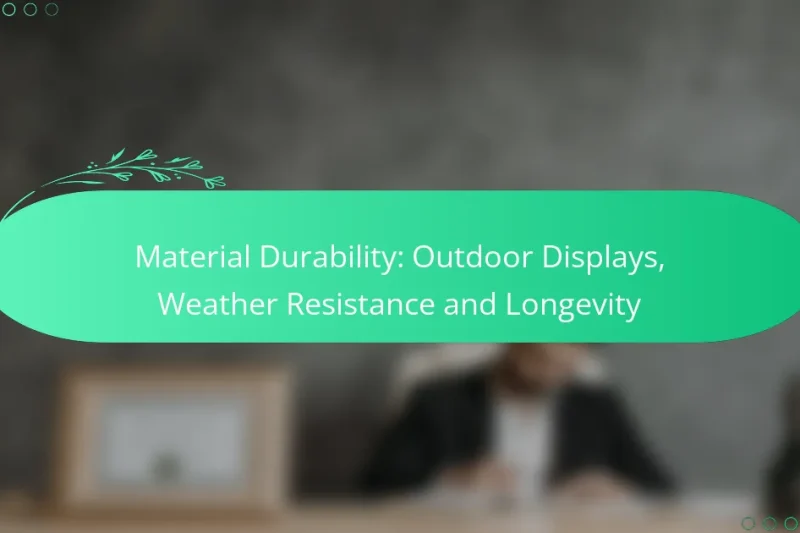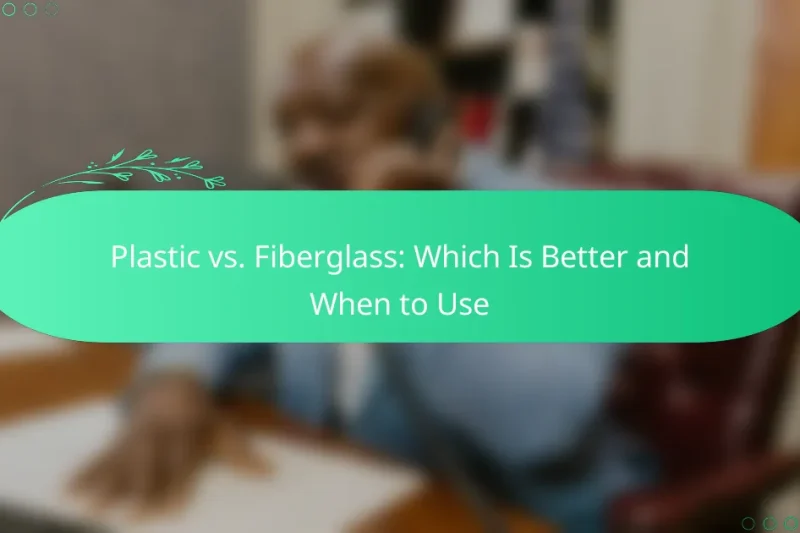The choice of materials for 3D mannequins plays a critical role in determining both the initial … Material Choice: Cost Implications and Value for 3D MannequinsRead more
3D Mannequin Material Quality
When selecting materials for 3D mannequins, it’s essential to consider options like polyurethane foam, fiberglass, plastic composites, wood, and metal, each offering distinct advantages in terms of durability, weight, and cost. The quality of these materials directly influences the mannequin’s resistance to damage and longevity, making higher-quality choices more beneficial for long-term use. Additionally, the cost of materials can vary widely, with budget-friendly options available alongside premium choices that provide enhanced realism and durability.
User Reviews: Performance, Durability and Environmental Adaptability
User reviews play a crucial role in assessing the performance, durability, and environmental adaptability of outdoor … User Reviews: Performance, Durability and Environmental AdaptabilityRead more
Sustainability: Eco-Friendly Options and Material Sourcing
In the pursuit of sustainability, selecting eco-friendly materials and implementing responsible sourcing practices are crucial steps … Sustainability: Eco-Friendly Options and Material SourcingRead more
Material Durability: Outdoor Displays, Weather Resistance and Longevity
When it comes to outdoor displays, selecting materials that ensure durability, weather resistance, and longevity is … Material Durability: Outdoor Displays, Weather Resistance and LongevityRead more
Plastic vs. Fiberglass: Which Is Better and When to Use
When deciding between plastic and fiberglass, it’s essential to consider the specific needs of your project. … Plastic vs. Fiberglass: Which Is Better and When to UseRead more
Material Maintenance: Care Tips and Best Practices for 3D Mannequins
Proper maintenance of 3D mannequins is crucial for preserving their appearance and extending their lifespan. Regular … Material Maintenance: Care Tips and Best Practices for 3D MannequinsRead more
Top Materials: Luxury Retail, Quality and Aesthetic Appeal
In the realm of luxury retail, the choice of materials plays a crucial role in defining … Top Materials: Luxury Retail, Quality and Aesthetic AppealRead more
What are the best materials for 3D mannequins?
The best materials for 3D mannequins include polyurethane foam, fiberglass, plastic composites, wood, and metal. Each material offers unique properties that cater to different needs, such as durability, weight, and cost-effectiveness.
Polyurethane foam
Polyurethane foam is a lightweight and flexible material commonly used for 3D mannequins. It is easy to mold and can be produced in various densities, allowing for customization based on the intended use.
This material is particularly suitable for fashion displays where a realistic appearance is desired. However, it may not be as durable as other materials, so consider its lifespan in high-traffic environments.
Fiberglass
Fiberglass is known for its strength and durability, making it a popular choice for high-end mannequins. It provides a solid structure that can withstand wear and tear, which is ideal for retail settings.
While fiberglass mannequins are more expensive than those made from foam, their longevity often justifies the investment. They can also be painted or finished to achieve a desired aesthetic, enhancing their visual appeal.
Plastic composites
Plastic composites combine various materials to create a lightweight yet sturdy option for 3D mannequins. They offer good resistance to impact and are often less expensive than fiberglass.
These mannequins are versatile and can be used in a range of environments, from outdoor displays to indoor retail settings. However, their appearance may not be as high-end as fiberglass or wood options.
Wood
Wood mannequins provide a classic and elegant look, often used in boutique settings. They can be crafted to showcase fine details and can be painted or stained to match the store’s theme.
While wood is aesthetically pleasing, it is heavier and may require more maintenance than synthetic materials. Additionally, wood mannequins can be more expensive, so consider your budget and display needs before choosing this option.
Metal
Metal mannequins are known for their durability and modern appearance. They are often used in high-end retail environments and can support heavier clothing items without bending or breaking.
However, metal mannequins can be more costly and may not be suitable for all display types due to their weight. Consider using them for permanent displays where their robust nature can be fully utilized.
How does material quality affect 3D mannequin durability?
Material quality significantly impacts the durability of 3D mannequins by determining their resistance to physical damage, environmental factors, and overall lifespan. Higher quality materials generally lead to mannequins that withstand wear and tear better, ensuring they remain functional and visually appealing over time.
Impact resistance
Impact resistance refers to a material’s ability to absorb shock and resist damage from sudden forces. For 3D mannequins, materials like high-density polyethylene (HDPE) or fiberglass offer superior impact resistance compared to lower-grade plastics. Choosing mannequins with robust materials can prevent cracks and breaks during transportation or when used in high-traffic retail environments.
When selecting a mannequin, consider the intended use. For example, if the mannequin will be frequently moved or handled, opt for materials that can withstand impacts without compromising structural integrity.
Weather resistance
Weather resistance is crucial for mannequins displayed outdoors or in environments with fluctuating temperatures and humidity. Materials such as UV-resistant plastics and treated wood can endure exposure to sunlight, rain, and temperature changes without fading or warping. This quality is essential for maintaining the mannequin’s appearance and functionality over time.
For outdoor displays, ensure the material is rated for outdoor use, as this will help avoid costly replacements. Regular maintenance, such as cleaning and protective coatings, can further enhance weather resistance.
Longevity
Longevity refers to how long a mannequin can last before needing replacement. High-quality materials typically offer greater longevity, with some mannequins lasting several years or even decades with proper care. Factors influencing longevity include material type, maintenance practices, and environmental conditions.
To maximize the lifespan of a 3D mannequin, invest in quality materials and implement a regular maintenance schedule. Avoid exposing mannequins to harsh chemicals and store them in a controlled environment when not in use to prevent premature deterioration.
What are the cost implications of different 3D mannequin materials?
The cost of 3D mannequin materials varies significantly based on the type of material used. Budget-friendly options can be quite economical, while high-end materials often come with a premium price tag due to their durability and realism.
Budget-friendly options
Budget-friendly materials typically include basic plastics and foam. These options can range from around $50 to $150, making them accessible for small businesses or individual users. While they may lack the realism of higher-end materials, they are lightweight and easy to transport.
Common pitfalls include sacrificing detail and durability. For instance, foam mannequins may not withstand heavy use, leading to quicker replacements. It’s essential to assess your specific needs before opting for these economical choices.
Mid-range materials
Mid-range materials often consist of fiberglass or higher-quality plastics, with prices generally between $150 and $500. These mannequins offer a balance of quality and cost, providing better durability and a more realistic appearance compared to budget options.
When selecting mid-range mannequins, consider their intended use. For retail environments, a more durable mannequin can withstand frequent handling, while for display purposes, aesthetics may take precedence. Look for features like removable parts or adjustable poses to enhance functionality.
High-end materials
High-end 3D mannequins are usually made from advanced materials like silicone or high-grade resin, with costs starting around $500 and potentially exceeding $2,000. These mannequins are known for their lifelike appearance and durability, making them ideal for high-end retail or fashion shows.
Investing in high-end materials can yield significant returns in terms of customer engagement and brand image. However, ensure proper maintenance to prolong their lifespan, as these materials may require specific cleaning methods. Always verify the manufacturer’s guidelines to maintain quality and appearance over time.
How to choose the right material for 3D mannequins?
Selecting the right material for 3D mannequins involves considering their intended use, environmental conditions, and weight requirements. Each factor plays a crucial role in ensuring the mannequin meets performance and durability expectations.
Purpose of use
The purpose of the mannequin significantly influences material choice. For retail displays, lightweight materials like PVC or foam may be preferred for ease of transport and setup. In contrast, mannequins intended for long-term exhibitions might require sturdier materials such as fiberglass or resin for enhanced durability.
Consider the specific needs of your application. For instance, if the mannequin will be frequently dressed and undressed, materials that can withstand wear and tear, such as high-density polyethylene, are advisable.
Environmental conditions
Environmental factors such as humidity, temperature, and exposure to sunlight can affect material performance. For outdoor displays, UV-resistant materials are essential to prevent fading and degradation. Indoor mannequins may not need such robust properties but should still be resistant to moisture if placed in humid areas.
Evaluate the specific conditions where the mannequin will be used. For example, if placed near windows, consider materials that offer UV protection to maintain appearance over time.
Weight considerations
Weight is a critical factor, especially for mannequins that need to be moved frequently. Lightweight materials like polystyrene are easier to handle but may compromise stability. Heavier materials, while more stable, can be cumbersome and require more effort to transport.
When choosing a material, balance weight with stability. For instance, if a mannequin will be displayed in a high-traffic area, opting for a heavier base or a weighted material can prevent tipping while still allowing for manageable handling.
What are the environmental impacts of 3D mannequin materials?
The environmental impacts of 3D mannequin materials primarily stem from their production, use, and disposal. Materials like plastics and resins can contribute to pollution and waste, while sustainable options may reduce these negative effects.
Sustainability of materials
Sustainable materials for 3D mannequins include biodegradable plastics, recycled materials, and natural fibers. These options typically have a lower carbon footprint and can minimize environmental harm compared to traditional plastics.
When selecting materials, consider certifications such as FSC (Forest Stewardship Council) for wood-based products or ISO standards for recycled content. These certifications can guide you toward more environmentally friendly choices.
For practical applications, look for suppliers who offer eco-friendly options and compare their lifecycle impacts. Prioritize materials that not only serve your design needs but also align with sustainability goals, as this can enhance your brand’s reputation and appeal to eco-conscious consumers.






